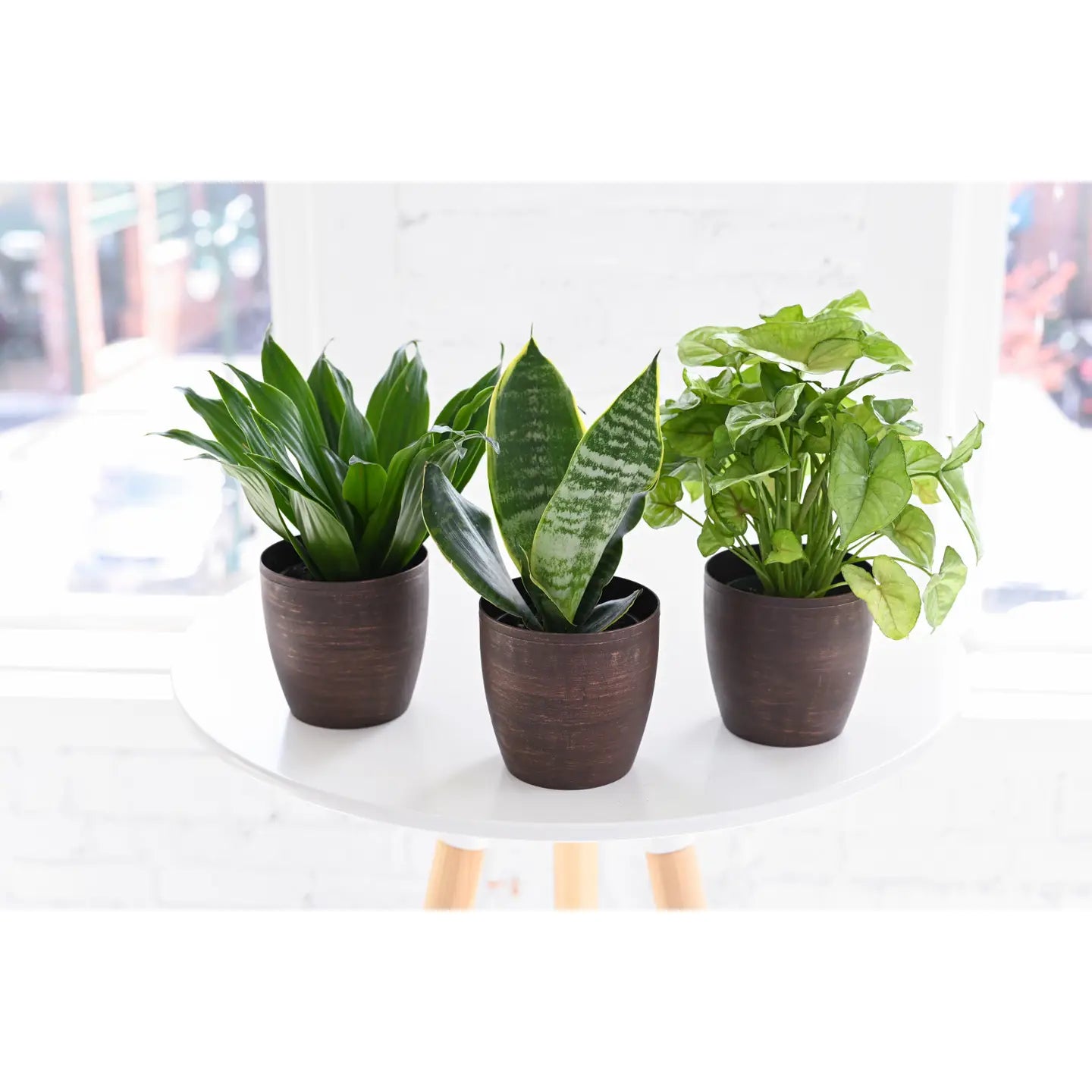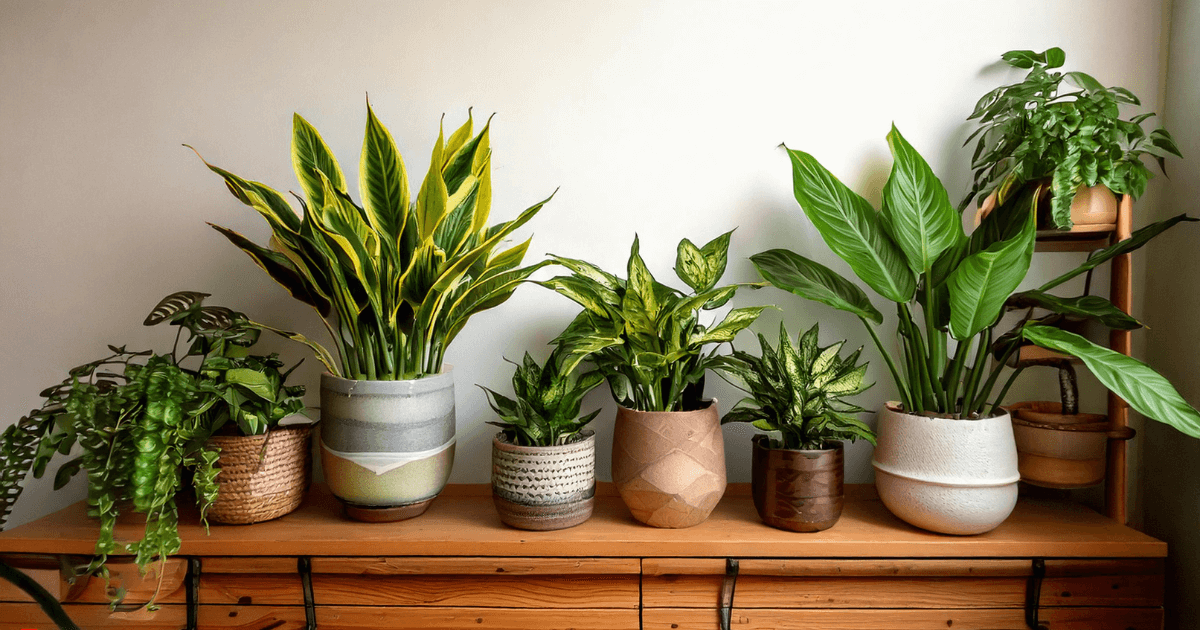Uncover the Secrets of Low-Light Indoor Plants and Just How They Boost Your Environment
Low-light indoor plants have gathered raising interest for their special ability to enhance both visual appeal and ecological high quality within homes and offices. These resilient types, consisting of the Serpent Plant and Tranquility Lily, not just grow in challenging illumination problems but additionally play an essential duty in air purification and psychological health. Understanding the details benefits and care demands of these plants can considerably affect your home. As we explore the intricacies of their advantages, you might uncover insights that could transform your surroundings in unanticipated means.
Benefits of Low-Light Indoor Plants
Although many individuals assume that interior plants call for abundant sunshine to grow, low-light indoor plants use a wide variety of advantages that make them ideal for numerous environments. Among the key advantages is their versatility; they can thrive in spaces with restricted all-natural light, such as offices, basements, or spaces with small home windows. This attribute allows individuals to enhance their environments with greenery, contributing to enhanced aesthetics without the demand for considerable lights modifications.
Moreover, low-light interior plants can substantially enhance indoor air quality by filtering system unsafe contaminants and launching oxygen, making living rooms healthier. The existence of plants has been connected to higher feelings of tranquility and emphasis.
Additionally, low-light plants often require less maintenance than their sun-loving counterparts, making them ideal for busy people or those new to horticulture. Their resilience allows them to prosper with minimal treatment, hence providing a rewarding experience for plant lovers and novices alike. In summary, low-light indoor plants serve both functional and visual functions, making them valuable enhancements to any kind of area.
Leading Low-Light Plant Varieties
Low-light interior plants been available in a selection of species, each offering unique features and benefits suited for dim environments. Amongst one of the most preferred selections is the Snake Plant (Sansevieria), recognized for its architectural leaves and air-purifying capacities. This resilient plant prospers on forget and can tolerate a variety of light problems.
Another superb choice is the ZZ Plant (Zamioculcas zamiifolia), which features glossy, dark environment-friendly leaves and is highly drought-tolerant. Its versatility makes it a preferred for offices and homes with restricted sunlight.
The Pothos (Epipremnum aureum) is additionally a leading competitor, with its tracking creeping plants and heart-shaped leaves - Best low-light indoor plants. This flexible plant can be educated to climb up or cascade, adding visual interest to any type of room

Care Tips for Low-Light Plants
Looking after low-light interior plants calls for a nuanced understanding of their certain requirements to guarantee optimum development and vigor. Initially, it is necessary to choose the ideal potting mix, as a well-draining soil is critical to stop root rot. A mix developed for houseplants, commonly including peat moss and perlite, works well for most low-light varieties.
Watering is another essential facet of care. Low-light plants normally call for less frequent watering contrasted to their sun-loving equivalents.
Fertilization must be approached with caution. Throughout the growing period, a watered down liquid plant food can be applied monthly, yet in winter season, several low-light plants get in inactivity and call for little to no fertilizing.
Finally, it's essential to regularly cleanse the leaves to eliminate dust, permitting much better light absorption. By sticking to these treatment tips, you can grow a flourishing atmosphere for your low-light interior plants, boosting both their appearance and durability.
Enhancing Air Top Quality With Plants
Interior plants play a substantial role in boosting air quality within homes and office. With the procedure of photosynthesis, these plants absorb co2 and launch oxygen, adding to a much healthier environment. In addition, specific low-light interior plants possess the ability to filter hazardous pollutants, such as trichloroethylene, benzene, and formaldehyde, which are commonly found in indoor environments.
:max_bytes(150000):strip_icc()/low-light-houseplants-asparagus-fern-getty-1123-74a20afe3f9249ce947a337e497b84ec.jpg)
Moreover, the existence of indoor plants can boost humidity levels, which aids minimize completely dry skin and breathing concerns, further boosting general health. This ability to enhance air quality not just advertises physical health yet also supports additional reading mental health.
Incorporating low-light interior plants into your living and functioning spaces can cause an extra stimulating and dynamic atmosphere (Best low-light indoor plants). Purchasing these all-natural air cleansers is an easy yet efficient strategy for boosting indoor air top quality and cultivating a healthier way of life
Creating a Calm Indoor Space
The integration of plants into living areas not only improves air top quality yet additionally adds to a serene atmosphere. Low-light indoor plants, such as serpent plants and pothos, are specifically efficient in creating a peaceful atmosphere, as they flourish in conditions that might otherwise be inhospitable for other greenery. Their lush vegetation offers a relaxing visual, minimizing stress and anxiety and advertising relaxation.
Integrating these plants into your home or office can evoke a sense of peace and well-being. Tactically positioning them in areas where you invest substantial time, such as living he has a good point offices or spaces, permits an immersive experience with nature, which has been shown to boost state of mind and cognitive function.
Furthermore, the gentle movement of leaves in response to air movement can create a dynamic visual component that improves the general atmosphere. Take into consideration using a selection of plant elevations and appearances to add depth and rate of interest to your room. With thoughtful placement and treatment, low-light indoor plants can change any location right into a tranquil haven, cultivating not just aesthetic satisfaction however psychological and also emotional wellness.

Final Thought
Incorporating low-light interior plants into different atmospheres returns considerable benefits, consisting of enhanced air top quality and improved aesthetic allure. These durable species not just flourish in marginal light yet also contribute to a soothing ambience, promoting psychological and mental wellness. By picking suitable ranges and executing appropriate treatment methods, individuals can efficiently cultivate a tranquil interior room that cultivates wellness and efficiency. The transformative power of low-light plants highlights their value in boosting both work and property settings.
Although numerous individuals think that indoor plants require bountiful sunshine to prosper, low-light interior plants provide a plethora of benefits that make them excellent special info for various atmospheres.Moreover, low-light indoor plants can dramatically boost indoor air quality by filtering harmful toxins and launching oxygen, making living areas healthier. In addition, specific low-light indoor plants have the ability to filter dangerous contaminants, such as formaldehyde, benzene, and trichloroethylene, which are commonly located in interior environments.
Low-light interior plants, such as snake plants and pothos, are particularly efficient in producing a calm setting, as they thrive in problems that may or else be inhospitable for various other greenery.Including low-light indoor plants right into different environments yields considerable benefits, including enhanced air top quality and boosted visual charm.
Comments on “The Best Low-Light Indoor Plants to Improve Your Home’s Air Quality”